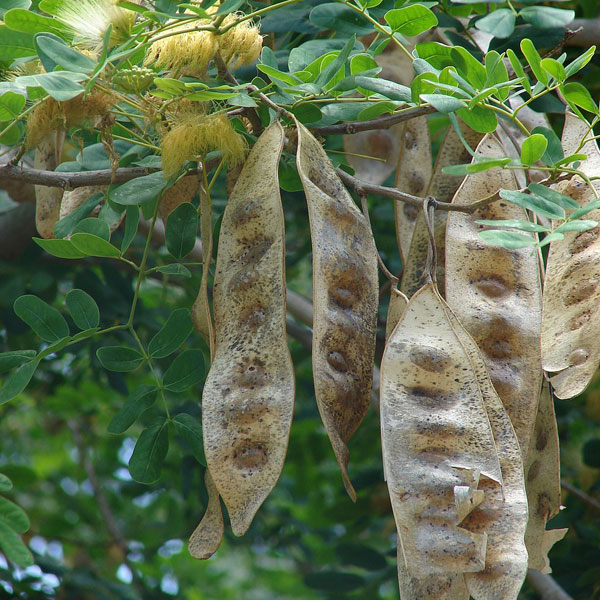
April 19, 2019; Civil Beat
Starting a new industry in a remote rural region is a daunting task. Selling the virtues of a tree so invasive that the state developed a strategic plan just to control this menace and a citizens group boasted of killing 12,000 of these trees in just one year, is also daunting. And promoting the use of the wood, commonly thought of as flimsy (like cheap wooden chopsticks) and difficult to mill, to build affordable housing sounds dubious at best. But this is the kind of out-of-the-box, risky, big-picture thinking and doing that we should celebrate and support.
The story begins in 1917, when a botanist brought the Albizia seedling from Indonesia to Hawaii to combat deforestation. Now, click forward a little more than 100 years, and you can read a report from the state that begins, “Albizia infests large swaths of our islands. Its rapid growth crowds out native species, its nitrogen fixing abilities change natural ecosystems, and its brittle wood breaks easily, smashing property and destroying lives.”
Indeed, most of the $325 million in damages caused by Hurricane Iselle in 2014 has been blamed on Albizia. Clearly, bringing Albizia to Hawaii was a grave mistake a century ago. Can anything be done beyond massive cutting and leaving the fallen trees to rot?
“Yes,” says Joey Valenti, an architecture student at the University of Hawai‘i-Manoa, who decided to show you can build a strong and beautiful house with this demonized wood, that it will be cheaper because you are using locally grown and milled materials, and that it could help remedy Hawaii’s extreme shortage of affordable housing.
Key to success was the use of a new timber technology, “cross-laminated timber,” where layers of wood are glued together to create large beams as strong as concrete and steel. In 2018, Valenti built a small, standalone, dome-shaped house almost entirely from Albizia that was cheaper and quicker to build than conventional homes and flexible enough to work in different environments. He didn’t do this this alone; he secured significant technical and financial help from the university, the state housing finance agency, and the US Forest Service.
Sign up for our free newsletters
Subscribe to NPQ's newsletters to have our top stories delivered directly to your inbox.
By signing up, you agree to our privacy policy and terms of use, and to receive messages from NPQ and our partners.
What next? Can Albizia kickstart a local lumber industry that can bring down the cost of housing in a place like tourist-dependent Hawaii, where a family of four needs a household income of more than $72,000 to get the basics? The challenges are considerable, including a lack of dependable supply of the wood, few sawmills and operators, unfriendly building codes, and contractors’ well-known reluctance to try something different. But the upsides could be significant: more affordable housing, a sustainable use for dangerous trees, and more manufacturing jobs in an economy dominated by lower-paying service ones.
We can learn from similar quests in other parts of the US to create a new and sustainable industry around an endangered forest base. And what we know is that it is very hard—but with a persistent vision, a wealth of public and private partners held together by a high-performing intermediary organization, policy changes, flexible funds, and an entrepreneurial spirit, success is possible.
In eastern Oregon, the Western Juniper has overtaken more than 9 million acres of rangelands, using up precious water in an already dry landscape, crowding out native plants needed by both wildlife and livestock, and contributing to the wildfire peril. Cutting juniper quickly restores watersheds and improves stream flows, which in turn improves grazing for cattle and habitat for native species. But significant challenges to widespread harvesting were clear: a reliable inventory of the tree, developing and manufacturing products from the wood, and identifying willing markets. The support of the former governor helped combine government agencies, wood products businesses, landowners, funders, and nonprofits in a partnership called the Western Juniper Alliance, placing Sustainable Northwest, a 20-year-old regional nonprofit with a reputation for getting historically hostile environmental, business, and community interests to collaborate to rebuild economies and forests, as the coordinating hub. To date, nearly $2 million has been raised; one beneficiary is the Ritter Land Management Team, a nonprofit group of nearly 30 local landowners, who after working on a feasibility study, used state and foundation funds to buy a portable sawmill to harvest the invasive tree and create local jobs.
Another regional nonprofit working successfully at the intersection of environmental, community, and business interests is the Northern Forest Center, focused on Maine, New Hampshire, Vermont, and northern New York, where global economic pressures over the past decades have meant the loss of tens of thousands of forest-related jobs and massive land sales to international corporations. One strategy that is getting traction is automated wood heat—using locally sourced wood pellets and chips to fuel high-efficiency boilers in dense clusters of homes and non-residential buildings. Sounds straightforward—but getting it to work means securing a reliable and adequate wood supply, importing a new technology, finding manufacturing partners, persuading local leaders and residents, securing financing, and changing state and local laws. So far, the Northern Forest Center’s efforts have generated $4 million in economic impact by helping 24 communities with wood heat conversion projects and installing 165 high-efficient wood pellet boilers in target neighborhoods. The skeptics are converting.
Back to Hawaii and its Albizias. Could this abundant if invasive resource be used to build affordable and sustainable homes, sustaining small independently owned mini-mills and cooperatively owned processing facilities? It goes against the grain of big forestry and how the region works. But as in Oregon and the Northern Forest, if a passionate, persistent, and smart regional intermediary working at the intersection of industry, community, and government, takes on this seemingly impossible idea, it might be possible.—Debby Warren













